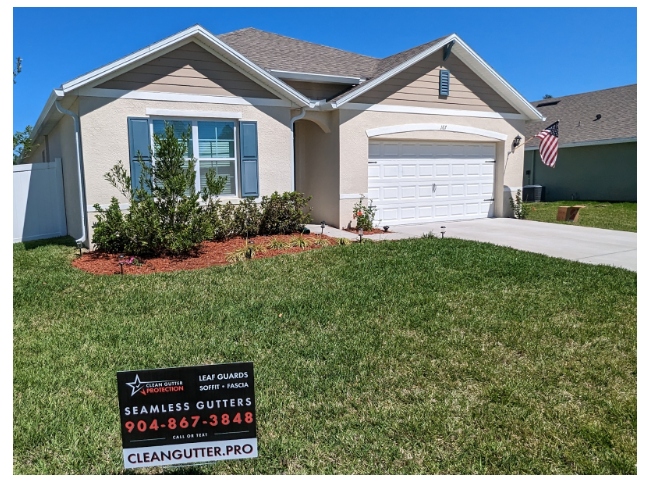Complete Guide to Rain Gutter Installation: Costs, Steps, and Tips for a Well-Protected Home
Rain gutters are a critical part of any home’s exterior, yet they are often overlooked until issues arise. Installing quality rain gutters on your property helps divert water away from the foundation, walls, and landscaping, preventing costly water damage. In this guide, we’ll cover everything you need to know about rain gutter installation, including types of gutters, the step-by-step installation process, and how much gutter installation costs in different regions.
Whether you’re considering a DIY installation or hiring a professional, understanding the process and cost factors involved will help you make the best decision for your home.
Why Install Rain Gutters?
Rain gutters serve the essential function of directing water away from your home’s foundation. Without properly functioning gutters, rainwater can seep into your basement, erode the soil around your home, or damage your siding and landscaping. Over time, water can even compromise the integrity of your home’s foundation, leading to cracks, leaks, and expensive repairs.
In regions prone to heavy rainfall, such as Florida, Georgia, and South Carolina, rain gutter installation is particularly important. Similarly, North Carolina and Tennessee homeowners also face seasonal weather changes that make durable, well-installed gutters a necessity.
How to Install Gutters: A Detailed Step-by-Step Guide
If you’re ready to take on a DIY project or simply want to understand what goes into gutter installation, this step-by-step guide will provide insights into the process.
Step 1: Plan and Measure
The first step in gutter installation is measuring the length of the roofline where the gutters will be installed. Accurate measurements are critical to ensure you purchase the correct amount of gutter material. Generally, you’ll need one downspout for every 30 to 40 feet of gutter.
In addition to measuring, you’ll also need to plan the slope. Gutters should slope downward toward the downspouts at about a 1/4 inch for every 10 feet. This ensures that water flows efficiently through the system and drains away from your home.
Step 2: Choose the Right Material
Gutters are available in various materials, each with its own benefits and price points. The most common options include:
- Aluminum Gutters: Lightweight, affordable, and rust-resistant, aluminum gutters are one of the most popular choices. They typically cost between $6 and $12 per linear foot.
- Vinyl Gutters: Another budget-friendly option, vinyl gutters are easy to install but may not last as long as metal gutters. These usually range between $3 and $6 per linear foot.
- Steel Gutters: Known for their durability, steel gutters can withstand harsh weather conditions but are prone to rust over time. Expect to pay around $8 to $20 per linear foot.
- Copper Gutters: A premium option, copper gutters are both functional and aesthetically pleasing. However, they come at a higher price point, ranging from $20 to $30 per linear foot.
Step 3: Install Gutter Hangers
To ensure your gutters are securely attached to the roofline, you’ll need to install gutter hangers or brackets every 2 to 3 feet. This provides support for the weight of the gutters, especially during heavy rainfall when they can become laden with water. Use a chalk line to mark the slope along the fascia to guide where to place the hangers.
Step 4: Attach the Gutters
Once the hangers are installed, it’s time to attach the gutters. Align each section of gutter with the hanger and secure it with screws. Make sure to seal all connections with a waterproof sealant to prevent leaks. It’s also important to leave room for thermal expansion if you live in an area where temperature changes are common, such as Tennessee or North Carolina.
Step 5: Install the Downspouts
Downspouts are crucial for channeling water away from the house and into a designated drainage area. Attach the downspouts to the gutter system using elbow joints, and secure them to the exterior wall with downspout brackets. Make sure the downspout discharges water at least 6 to 10 feet away from the foundation to prevent water from pooling near your home.
Step 6: Test the System
Once installation is complete, test your new gutters by running water through the system with a hose. This will help you identify any leaks, blockages, or improper slopes that need to be adjusted. If everything works properly, you can rest easy knowing your home is protected from water damage.
How Much Does Gutter Installation Cost?
The cost of gutter installation varies based on several factors, including the size of your home, the material you choose, and your geographic location. On average, homeowners can expect to spend between $1,200 and $2,500 for professional installation on a standard-sized home.
Here’s a closer look at gutter installation costs based on region:
- Florida: With frequent rainstorms, homeowners in Florida often invest in higher-quality materials like aluminum or copper, leading to installation costs between $1,500 and $2,500.
- Georgia: The average cost of gutter installation in Georgia is slightly lower, ranging from $1,200 to $2,000, depending on the material and labor rates.
- South Carolina: Homeowners in South Carolina can expect to pay between $1,300 and $2,300 for professional gutter installation.
- North Carolina: Due to the varying climate conditions, costs in North Carolina generally range from $1,400 to $2,400.
- Tennessee: Tennessee residents typically pay between $1,100 and $2,100, with vinyl being a popular option due to its affordability.
Additional Costs for Gutter Guard Installation
If you’re considering gutter guard installation, the overall cost will be higher but may save you time and money in the long run by reducing the need for regular gutter cleaning. Gutter guards prevent debris like leaves and twigs from clogging your system, ensuring that water flows freely.
The cost of gutter guards varies depending on the type you choose:
- Screen Gutter Guards: $1.50 to $3.50 per linear foot
- Mesh Gutter Guards: $2.50 to $6 per linear foot
- Surface Tension Gutter Guards: $7 to $15 per linear foot
For a typical home, gutter guard installation costs can range between $1,500 and $3,000 in addition to the gutter installation costs.
Should You Hire a Professional?
While DIY gutter installation can save on labor costs, hiring a professional is often a wise investment, especially if you have a multi-story home or steep roof. Professional installers can complete the job efficiently, ensuring that your gutters are properly sloped, sealed, and aligned. They’ll also have access to tools and materials that make the installation process smoother.
In regions like Florida, Georgia, South Carolina, North Carolina, and Tennessee, the team at Clean Gutter Protection is ready to assist with your gutter and gutter guard installation needs. Contact us at 888-507-4854 to schedule a free consultation and estimate.
Conclusion: Protect Your Home with Proper Gutter Installation
Gutters are an essential investment in protecting your home from water damage. Whether you’re installing them yourself or hiring a professional, knowing the steps involved and understanding the costs will help you make an informed decision. Proper gutter installation not only protects your foundation but also enhances your home’s longevity and curb appeal.
For expert gutter installation in Florida, Georgia, South Carolina, North Carolina, or Tennessee, contact Clean Gutter Protection today. We offer a range of options, including gutter guard installation, to help you keep your home safe from water damage year-round.






